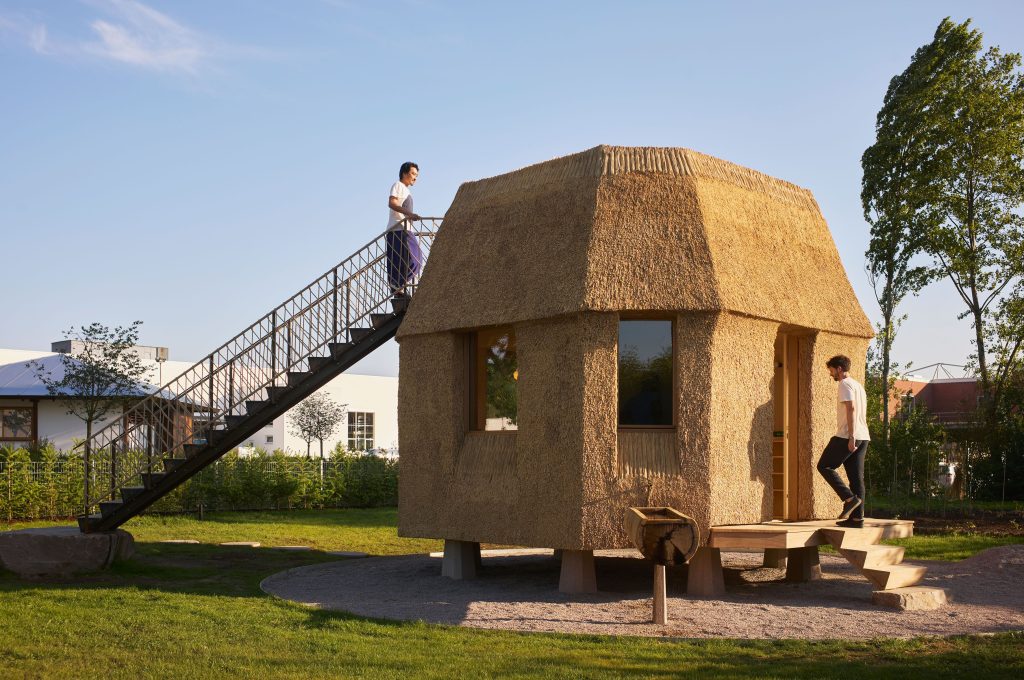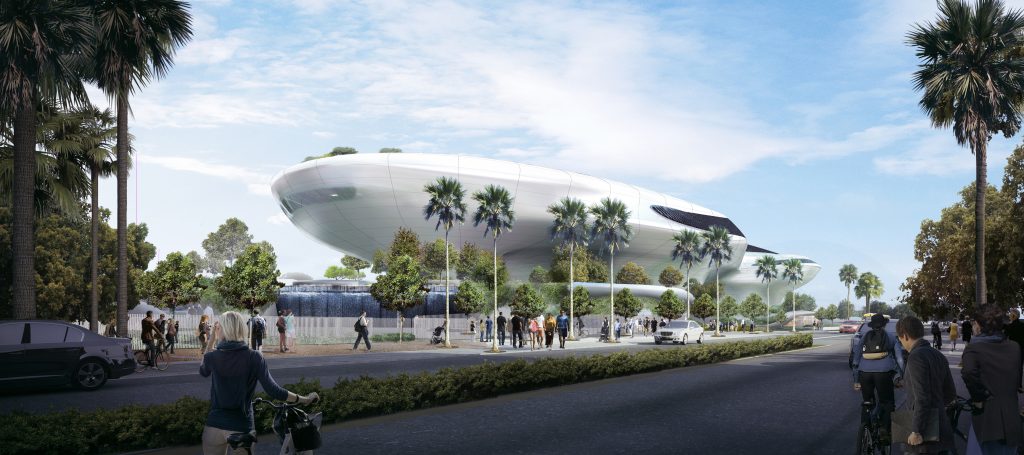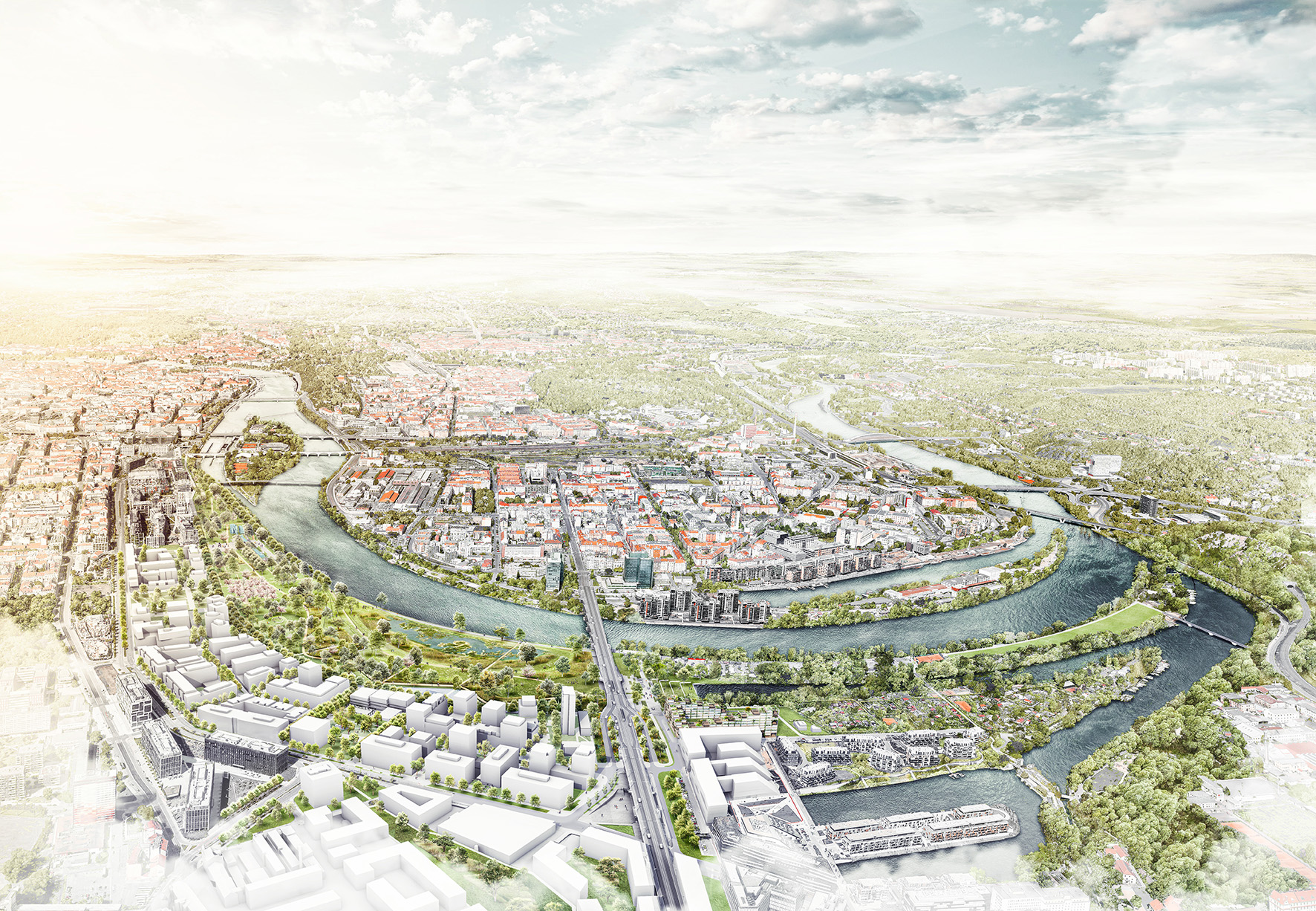
Billboard
Skyscrapper
Halfpage
Belgian architecture studio OMGEVING has won the competition for constructing a climate park in Prague. This new metropolitan park has the goal of restoring the bond between the Vltava River and the city. Read more about the ambitious large-scale green project.
Prague’s new climate park, designed by OMGEVING, is the third large green project along the river Vltava that the city is planning. The goal is to achieve river restoration and flood measures as well as metropolitan park development. With a location next to the meandering river, the climate park will restore the connection between river and city. The winning design convinced the jury of the international design competition with its future-proof development strategy that responds to the natural and urban dynamics of the area. As an elongated park, the space will provide a robust blue-green framework that is anchored to the surrounding urban fabric. Parts of the park will be floodable to create a flood-resistant park that also offers various park functions for people of all ages. OMGEVING also suggested new cycling and walking parks along the river.
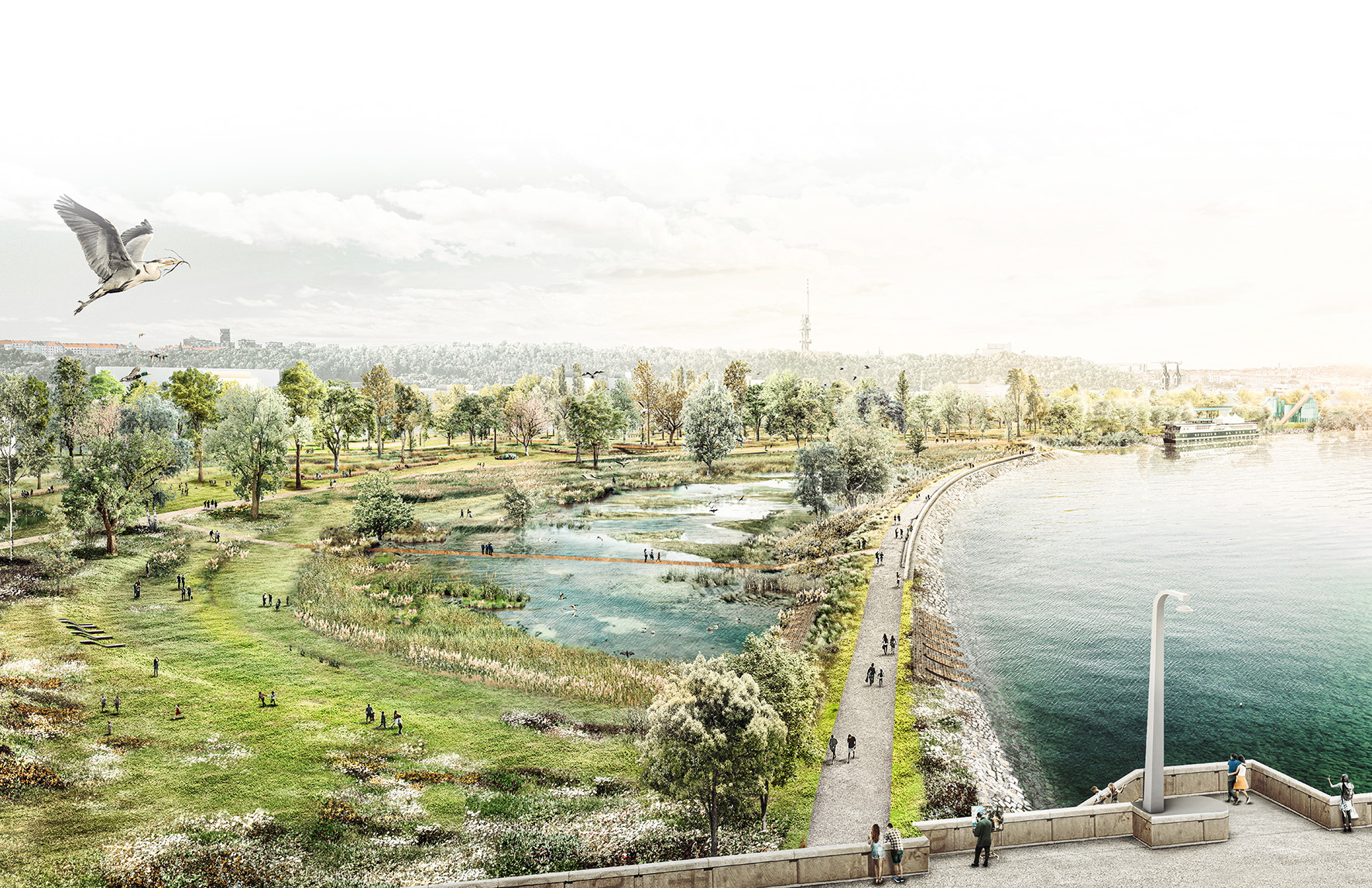
A temporarily floodable park
The redevelopment of the riverside area in the Prague 8 district is a response to the natural dynamics of both the river and the local urban dynamics. The city wants to focus on climate adaptation, biodiversity, CO2 neutrality, circularity, and sustainable mobility with this design. OMGEVING’s design will now be refined during a co-creative process that involves local residents as well as local partners Fiser, VRV, and Sindlar. The main client is the City of Prague.
On an area of 56 hectares, the new climate park will provide various different park rooms and functions. Maniny Park, Rohan Island and Libeñ Island will be part of the new urban park by OMGEVING + Fiser. The project zone includes a former railway area. It is located within walking distance of Prague’s historic city centre and the dynamic new Karlin centre.
OMGEVING and Czech architects Fiser are planning an intervention on the existing topography to create a new river meander. This will help the temporary floodability of the climate park, while also supporting landscape restoration of some low-lying vistas. With a terraced park design, the architects want to facilitate a gradual transition between wet zones along the lower riverbanks to dry zones at the higher edge of the park. This will create opportunities for increased biodiversity with various vegetation types. In turn, these new plants will improve natural storage and provide cooling during hot summer days.
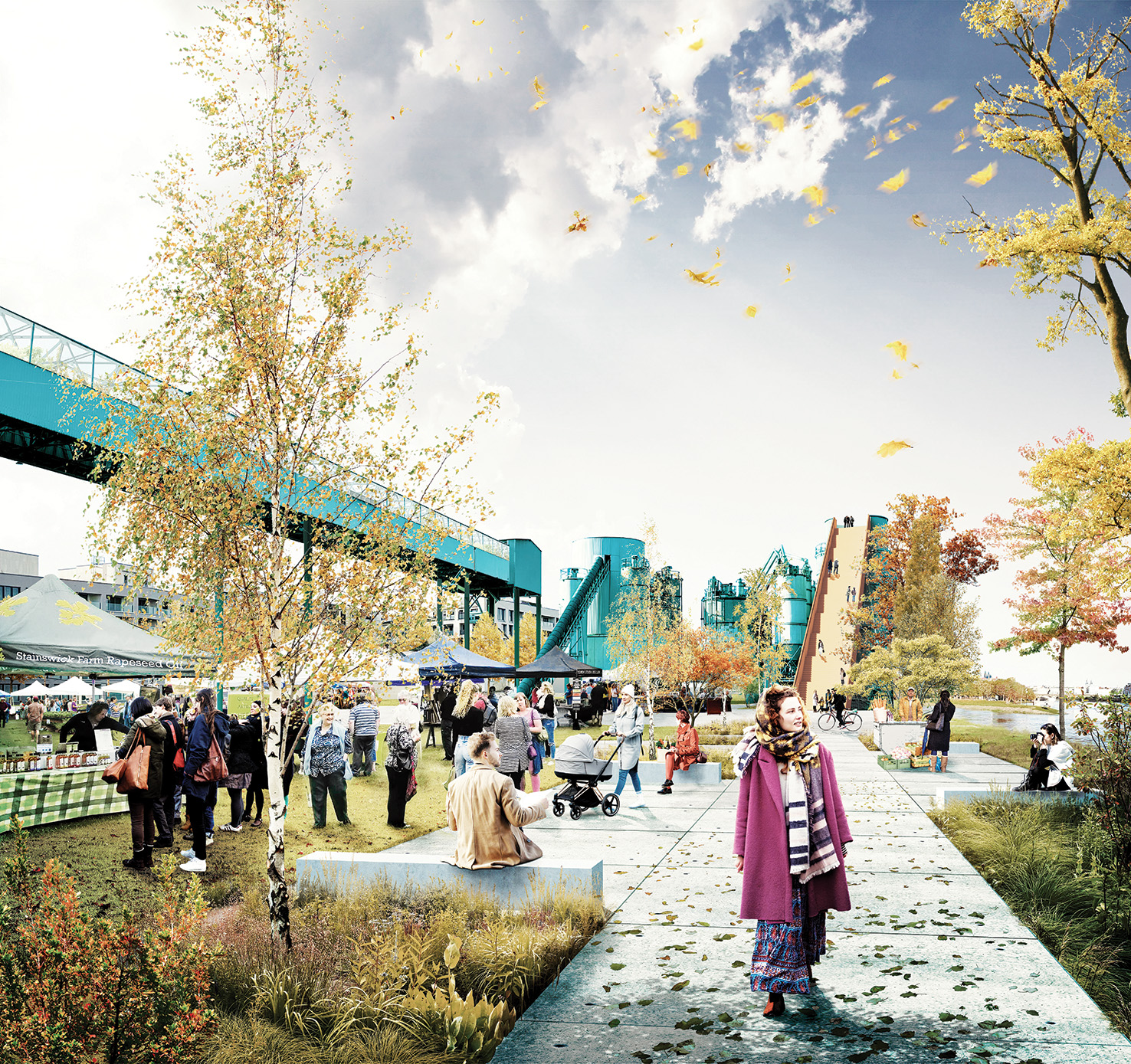
Recreation on a flexible park island
The innovative climate park will also reinforce the historical stratification of the zone by expanding the blue-green park structure with several urban park rooms. The diverse programme of the new space will include wild nature development, the preservation of traces of the past, a reference to an urban food strategy, space for play and relaxation, and biodiversity areas. This park will be tailored to both people and nature, providing spaces for temporary use while also considering transition to guarantee a future-proof use for the coming decades. In addition, the park structure focuses on flexibility to respond to the different seasons and target groups of the space. To invite as many people as possible, Prague’s new climate park will be easily reachable and accessible for people with reduced mobility.
The city is also proud to develop a climate park that is designed for all ages. Sports and recreational opportunities on a flexible park island provide attractions, and the integration and upgrade of the city’s oldest allotment complex as well as a new swimming location broaden the range of leisure activities. Of course, the architects also encourage spontaneous park activities and temporary usage.
Read more: Rotterdam’s new Hofbogenpark is also designed as a climate-resilient park








